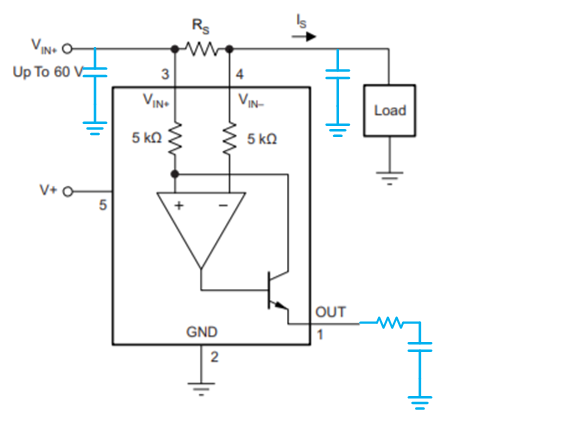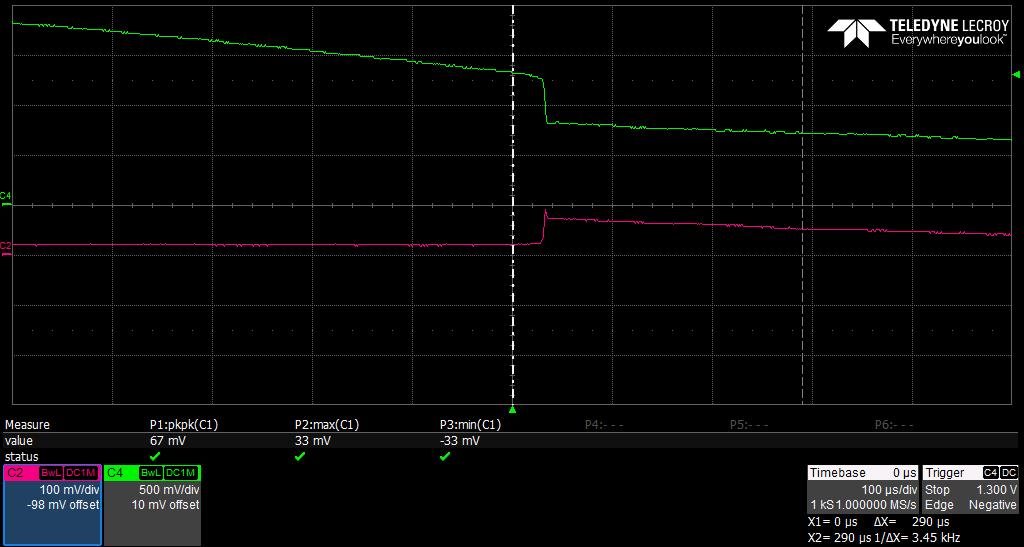Other Parts Discussed in Thread: INA180
I have noticed that I get a glitch on the output of the INA168 when VIN+ is between 0.7V and 1.2V. This is a potential issue for me as my system has a slowly ramping input voltage and it's possible that the output glitch can be seen by my micro before the micro VDD is established. I get the same glitch as the system voltage ramps down - when it reaches 1.2V the INA168 output spikes up to 300mV, which then ramps down with the input voltage.
Is this normal, expected behavior? There is no current passing through the sense resistor at these times so I would expect the output to be zero.
If this IS expected behavior, is 300mV the expected size of the glitch? Or could it potentially be higher? 300mV is right around the max I would want to apply to the GPIO of an unpowered microcontroller, if another INA168 could have a different glitch (say, 700mV) then this could be a much larger problem.







